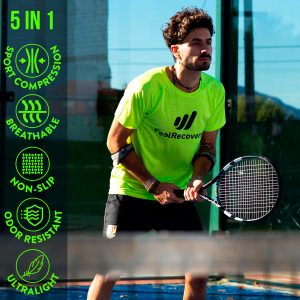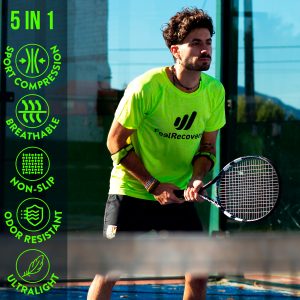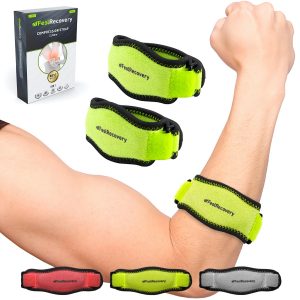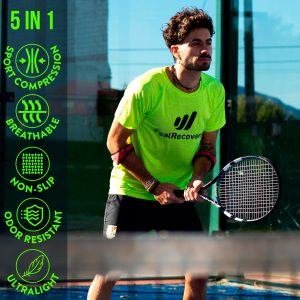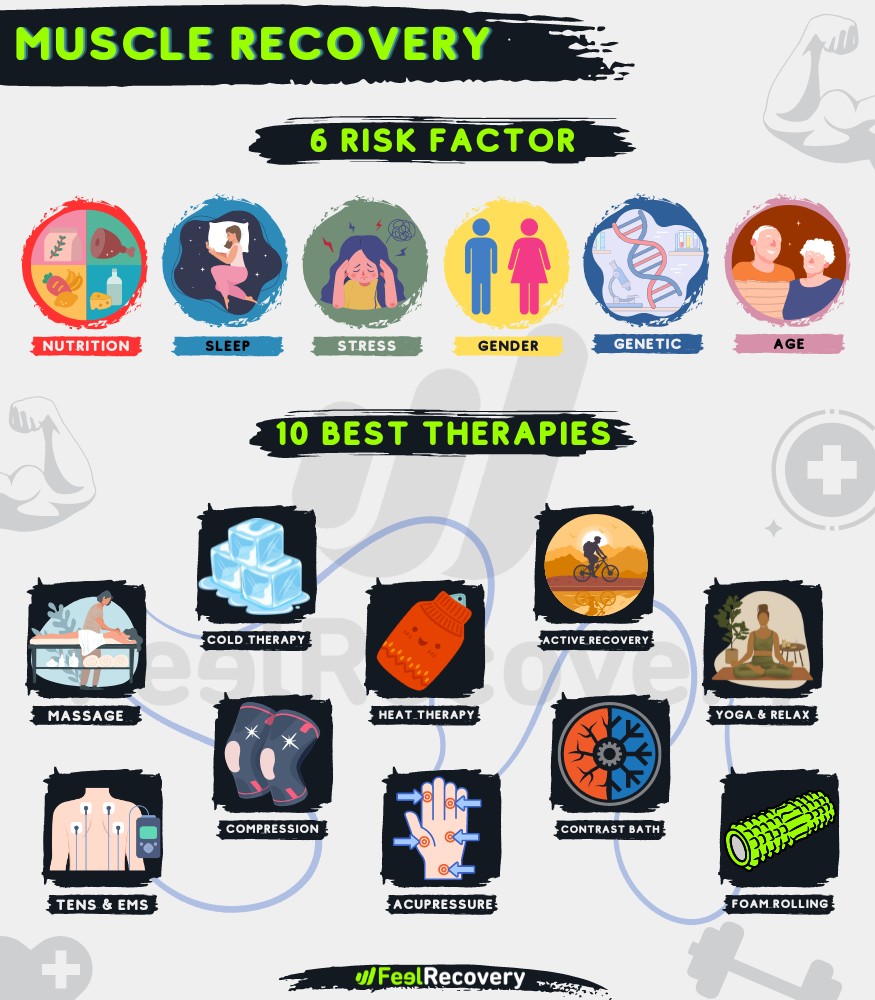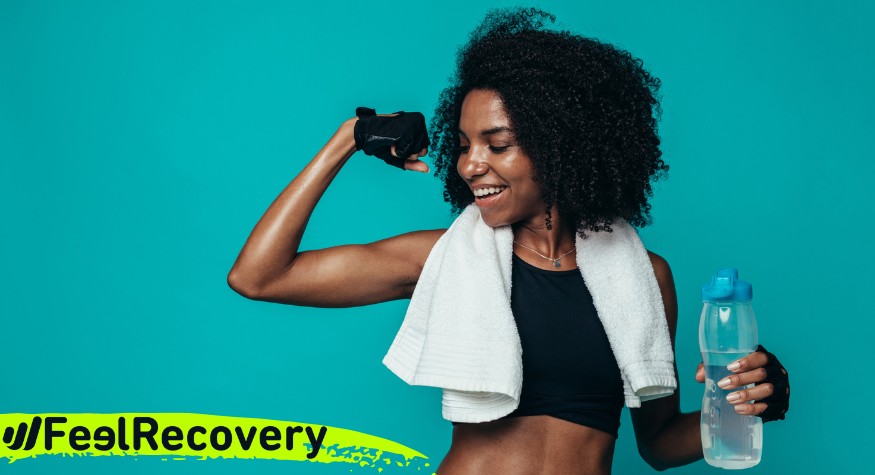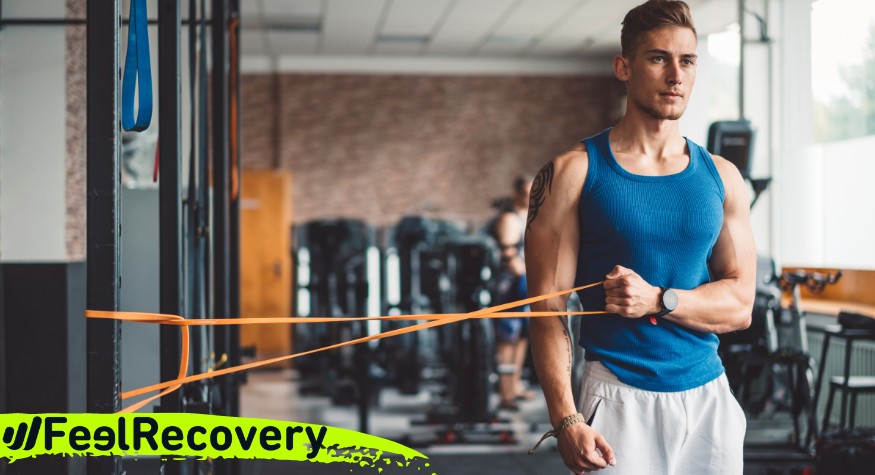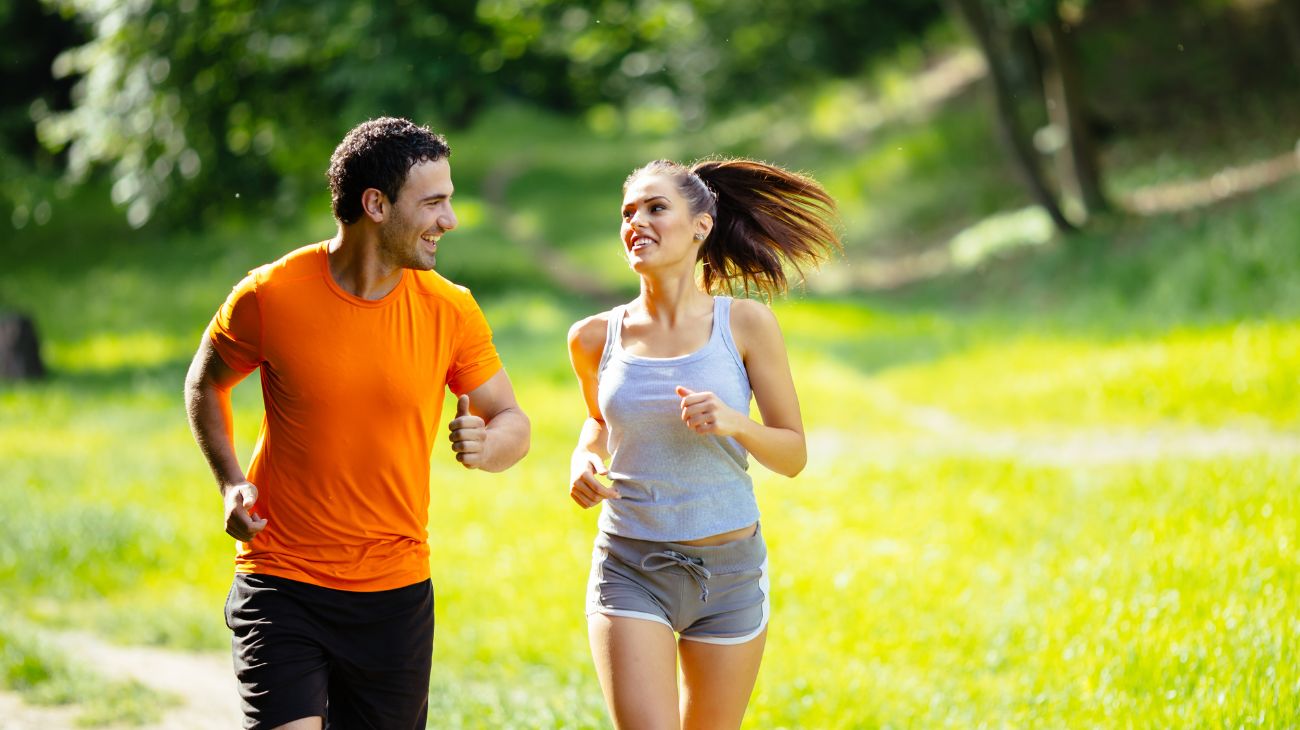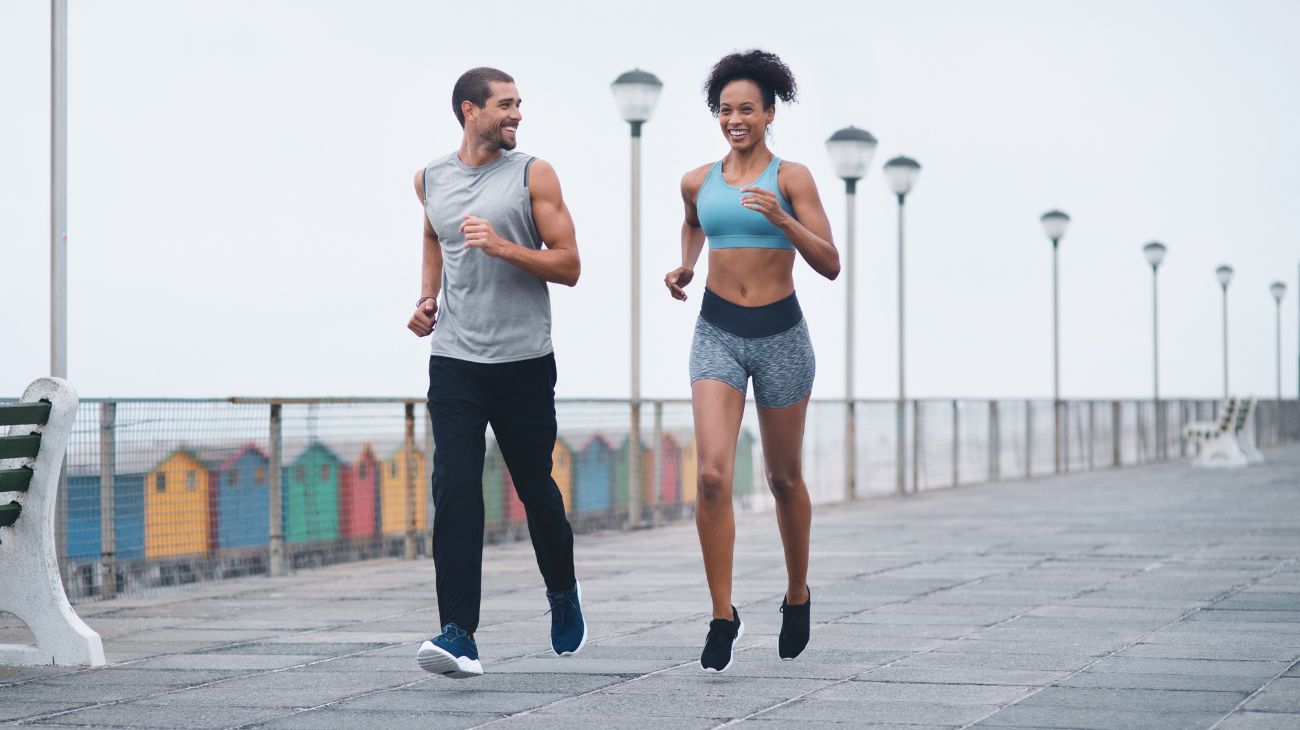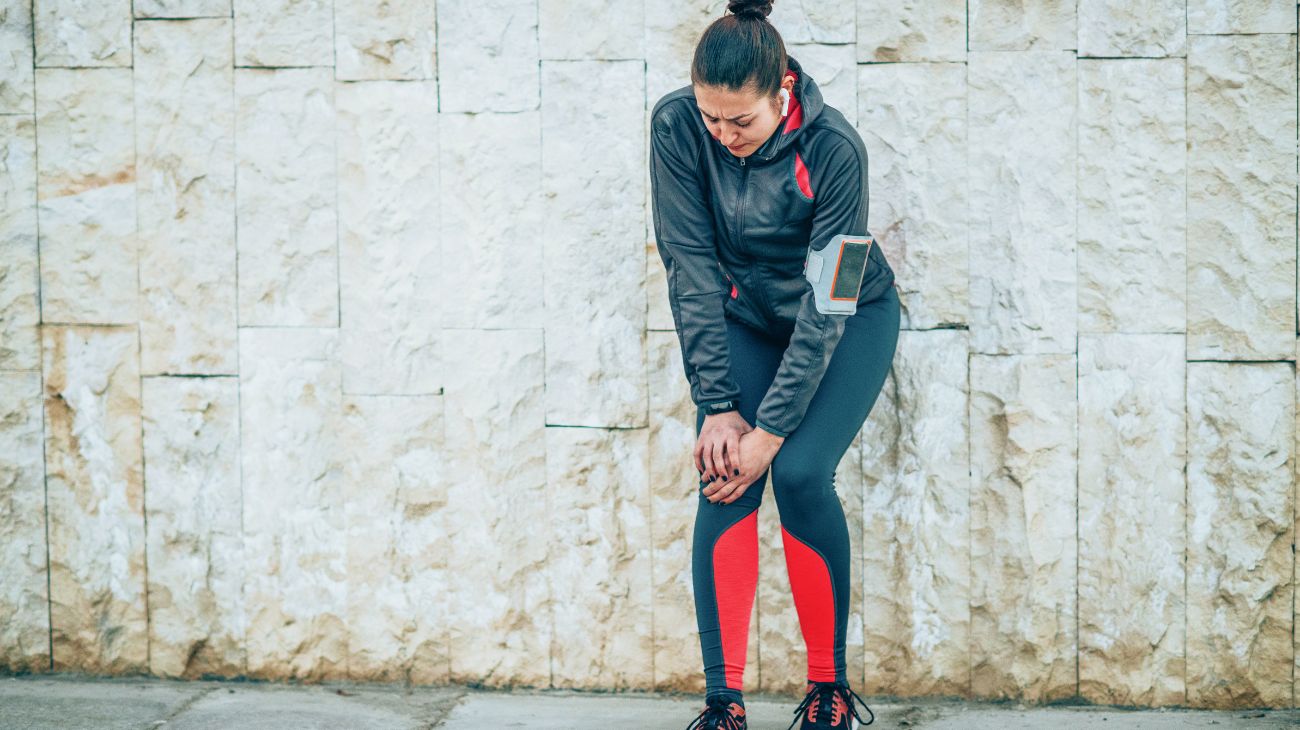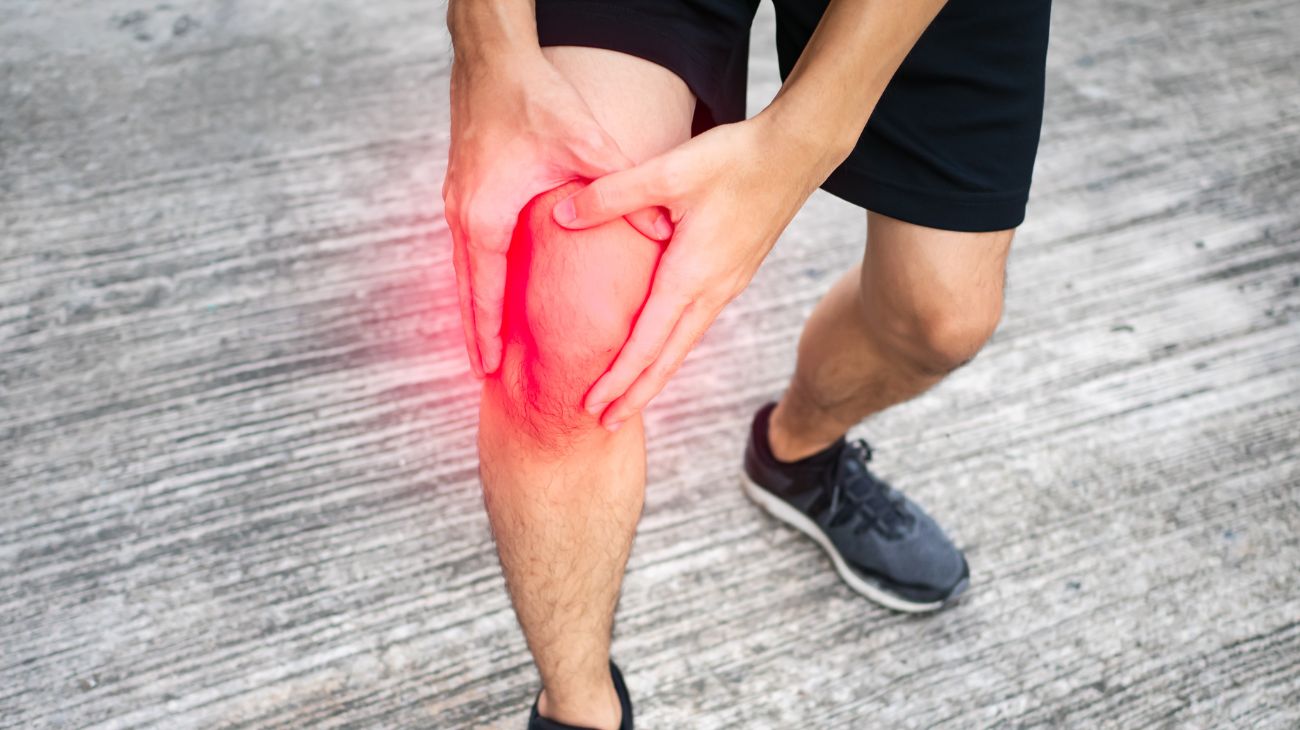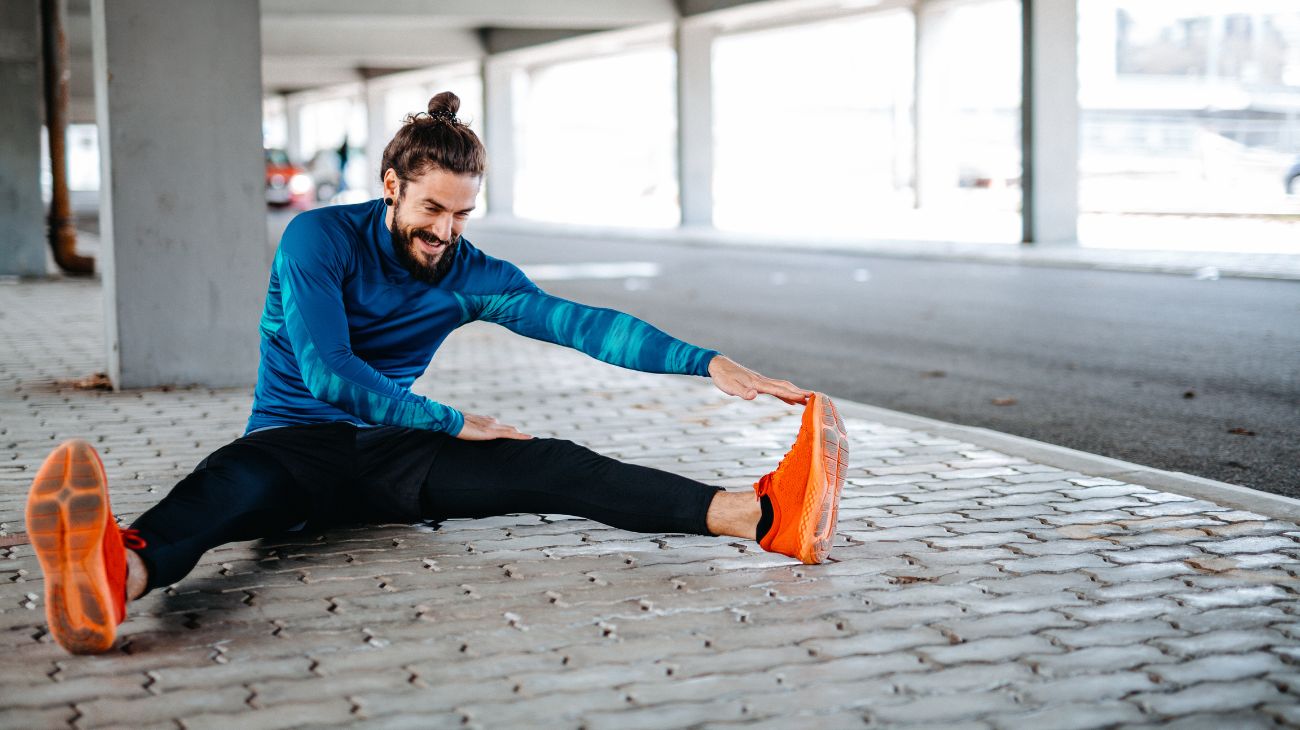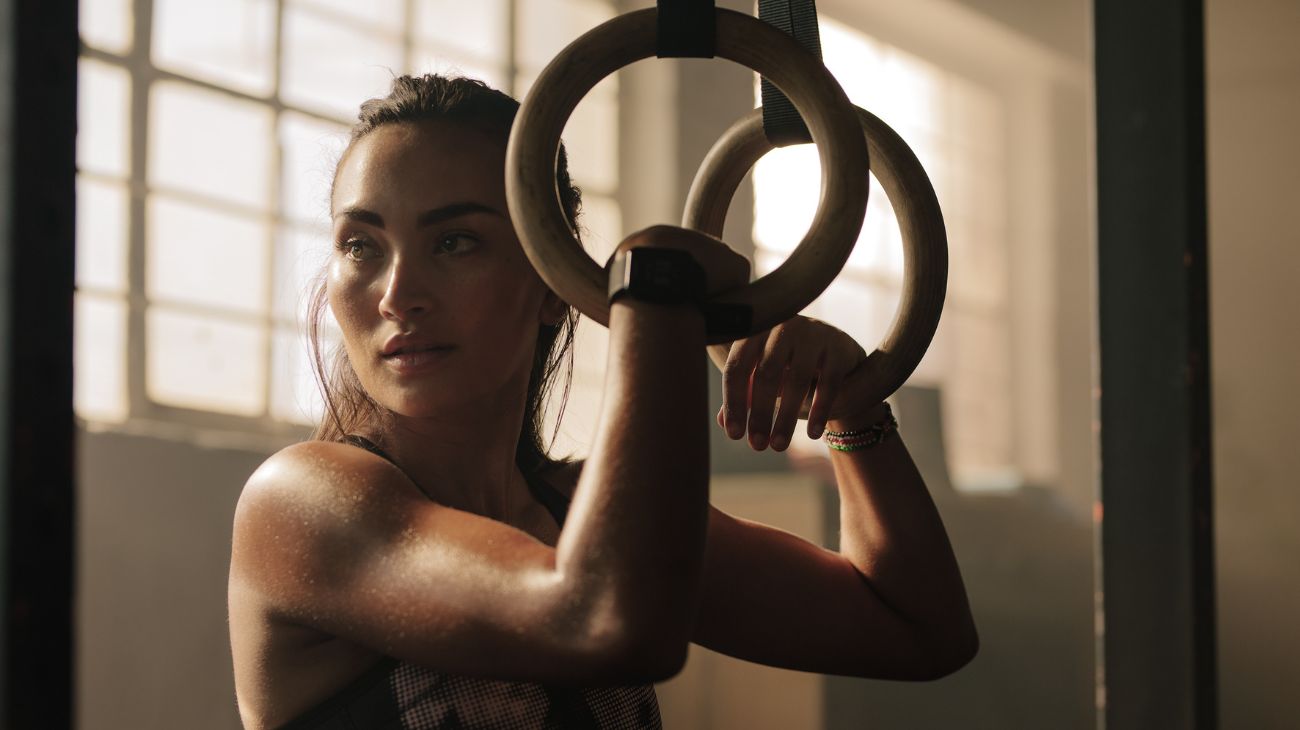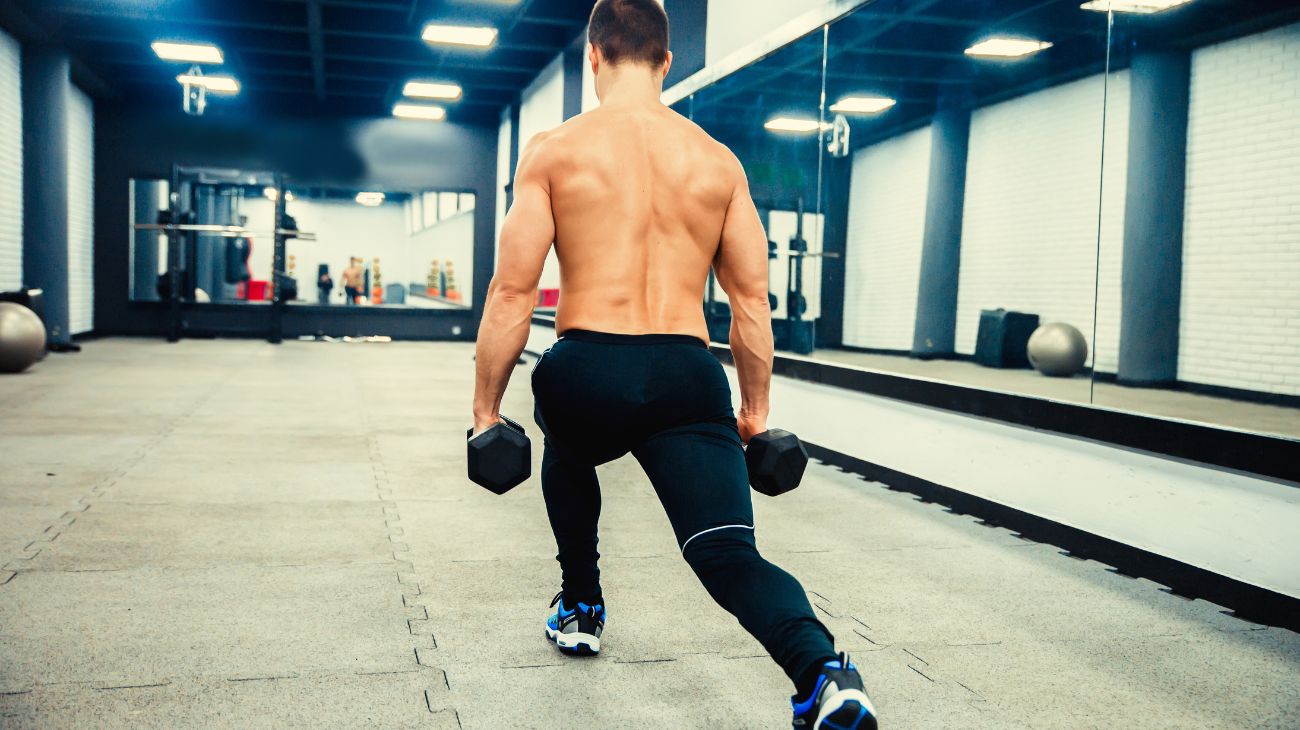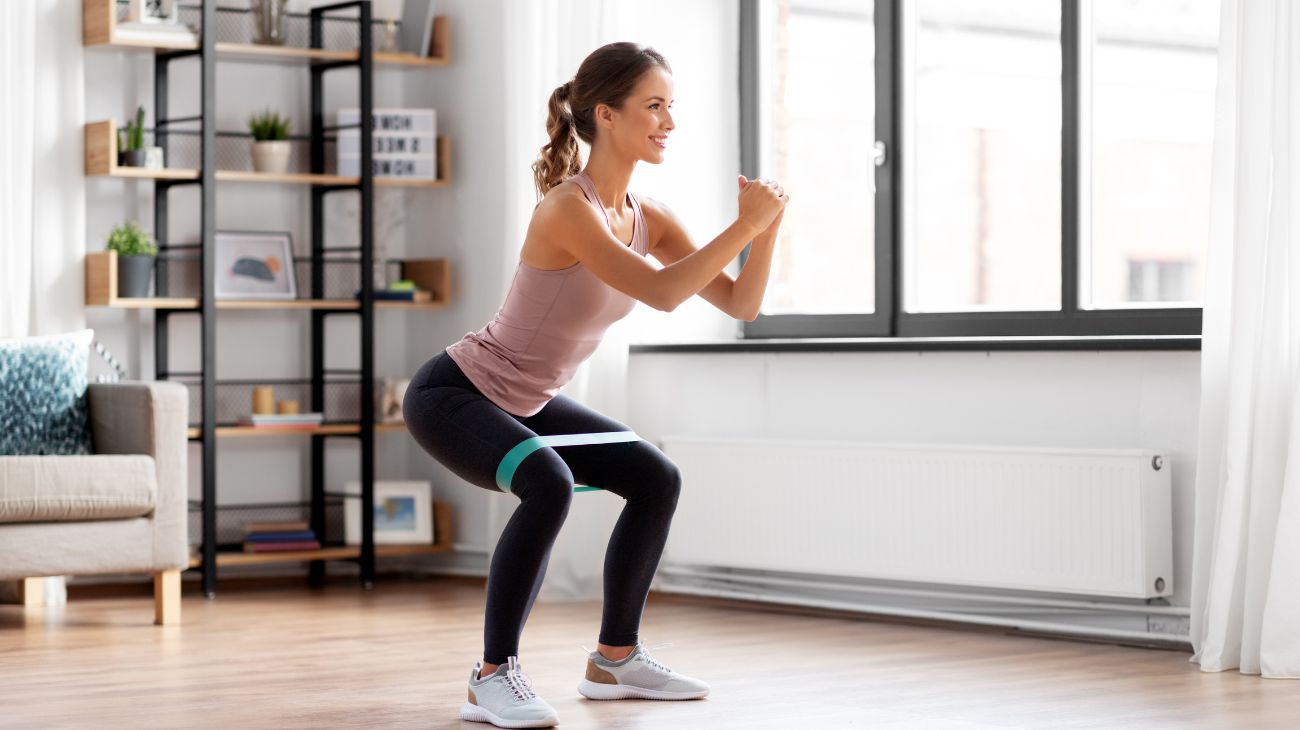Active recovery methods are essential for preventing muscle soreness and injury after physical activity. Active recovery involves performing low-intensity exercises, such as light jogging, swimming, or yoga, to increase blood flow and promote the removal of lactic acid buildup in the muscles. This type of recovery helps to decrease muscle fatigue and stiffness, improving flexibility, and aiding in the recovery process.
Active recovery methods also help to maintain cardiovascular fitness and endurance, preventing detraining and improving overall physical performance. Moreover, can aid in reducing stress levels, promoting relaxation, and improving overall mental health. Incorporating this methods into a fitness routine can help prevent injuries, improve overall physical and mental health, and optimize athletic performance.
Best products for active recovery
bestseller
-
2 Ankle Compression Sleeve (Black/Gray)
£20,95 -
2 Ankle Compression Sleeve (Green/Navy)
£20,95 -
2 Ankle Compression Sleeve (Pink/Bordeaux)
£20,95 -
2 Calf Compression Sleeve (Black/Gray)
£20,95 -
2 Calf Compression Sleeve (Green/Navy)
£20,95 -
2 Calf Compression Sleeve (Pink/Bordeaux)
£20,95 -
2 Elbow Compression Sleeve (Black/Gray)
£20,95 -
2 Elbow Compression Sleeve (Green/Navy)
£20,95 -
2 Elbow Compression Sleeve (Pink/Bordeaux)
£20,95 -
2 Knee Compression Sleeve (Black/Gray)
£20,95 -
2 Knee Compression Sleeve (Green/Navy)
£20,95 -
2 Knee Compression Sleeve (Pink/Bordeaux)
£20,95 -
2 Patella Knee Strap (Black/Gray)
£12,95 -
2 Patella Knee Strap (Green/Navy)
£12,95 -
2 Patella Knee Strap (Pink/Bordeaux)
£12,95 -
2 Tennis Elbow Brace (Black/Gray)
£12,95 -
2 Tennis Elbow Brace (Green/Navy)
£12,95 -
2 Tennis Elbow Brace (Pink/Bordeaux)
£12,95 -
2 Thigh Compression Sleeve (Black/Gray)
£20,95 -
2 Thigh Compression Sleeve (Green/Navy)
£20,95 -
2 Thigh Compression Sleeve (Pink/Bordeaux)
£20,95 -
Back Support Belt (Green)
£39,95
-
Back Support Belt (Black)
£39,95 -
Back Support Belt (Pink)
£39,95 -
Foot Massage Roller for Plantar Fasciitis (Black)
£20,95 -
Foot Massage Roller for Plantar Fasciitis (Green)
£20,95 -
Foot Massage Roller for Plantar Fasciitis (Pink)
£20,95 -
Ice Massage Roller Ball (Black)
£34,95 -
Ice Massage Roller Ball (Green)
£34,95 -
Ice Massage Roller Ball (Pink)
£34,95 -
Sacroiliac Support Belt (Black)
£24,95 -
Sacroiliac Support Belt (Green)
£24,95 -
Sacroiliac Support Belt (Pink)
£24,95 -
Shoulder Support Brace (Black)
£24,95 -
Shoulder Support Brace (Green)
£24,95 -
Shoulder Support Brace (Pink)
£24,95 -
Soft Density Foam Roller for Recovery (Black)
£34,95 -
Soft Density Foam Roller for Recovery (Green)
£34,95 -
Soft Density Foam Roller for Recovery (Pink)
£34,95 -
Sport Compression Socks (1 Pair) (Black/Gray)
£20,95 -
Sport Compression Socks (1 Pair) (Green/Navy)
£20,95 -
Sport Compression Socks (1 Pair) (Pink/Bordeaux)
£20,95
What is active recovery?
Active recovery is a method of recovering from exercise or training that involves low-intensity movements or exercises. This can include activities such as light jogging, cycling, or stretching. The purpose is to increase blood flow to the muscles and promote the removal of waste products such as lactic acid, which can cause muscle soreness and fatigue.
Active recovery is important because it can help to reduce muscle soreness and prevent injury. By promoting blood flow to the muscles, this can help to speed up the healing process and reduce the risk of muscle damage. It can also help to improve flexibility and range of motion, which can help to prevent future injuries.
During a workout, the muscles produce waste products such as lactic acid, which can cause muscle soreness and fatigue. Active recovery helps to flush these waste products out of the muscles, reducing muscle soreness and promoting faster recovery. It also helps to increase blood flow to the muscles, providing them with the oxygen and nutrients they need to repair and rebuild.
Types of active recovery methods
Here is a list of the best types of active recovery methods:
- Low-impact exercises: walking, cycling, swimming, elliptical training, etc.
- Mobility exercises: stretching, yoga, Pilates, etc.
- Massage therapy: self-massage techniques, foam rolling, massage guns, etc.
- Dynamic movements: bodyweight exercises, resistance band training, light weightlifting, etc.
- Hydrotherapy: cold or hot showers, ice baths, contrast baths, etc.
- Mind-body practices: meditation, deep breathing, tai chi, etc.
- Active rest: engaging in non-strenuous activities like hiking, nature walks, or playing with pets.
- Nutrition: consuming healthy foods rich in protein, complex carbohydrates, and antioxidants, and staying hydrated with water or electrolyte drinks.
It is important to note that active recovery methods should be individualized and based on an individual's fitness level, type of activity, and recovery needs.
Benefits of active recovery methods
Here are some benefits of active recovery methods:
- Improved Muscle Recovery: Such as low-impact exercises and mobility exercises can help improve blood flow and circulation to the muscles, which can aid in the removal of waste products and the delivery of nutrients to promote muscle repair and growth.
- Reduced Muscle Soreness: Such as light exercise and stretching can help reduce muscle soreness and stiffness that can occur after intense workouts.
- Enhanced Flexibility and Range of Motion: Incorporating mobility exercises such as stretching, yoga, and Pilates into an active recovery routine can help improve flexibility and range of motion, which can improve athletic performance and reduce the risk of injury.
- Reduced Risk of Injury: This can help reduce the risk of injury by promoting muscle recovery, reducing muscle soreness, and improving flexibility and range of motion.
- Improved athletic performance and endurance: This can improve athletic performance and endurance by promoting faster recovery, reducing muscle fatigue, and improving overall fitness levels. By incorporating active recovery into their routine, athletes can perform at a higher level with less risk of injury.
- Boosted immune system function: It has been shown to boost immune system function by increasing blood flow and lymphatic circulation, which helps to flush out toxins and improve overall health. This can help athletes stay healthy and perform at their best.
- Improved sleep quality and duration: Can also improve sleep quality and duration by reducing muscle tension, promoting relaxation, and reducing stress levels. This can lead to better overall health and improved athletic performance.
- Reduced stress and anxiety levels: It has been shown to reduce stress and anxiety levels by promoting relaxation and reducing muscle tension. This can lead to improved mental health and well-being, which can have a positive impact on athletic performance.
- Enhanced mood and overall sense of well-being: Can enhance mood and overall sense of well-being by reducing stress levels, promoting relaxation, and releasing endorphins, which are natural mood-boosting hormones. This can help athletes feel more positive and motivated, leading to improved athletic performance.
How to incorporate active recovery into your Fitness routine?
Is a crucial aspect of any fitness routine that can help promote recovery, prevent injury, and improve overall performance.
Here are some tips on how to incorporate active recovery into your fitness routine:
- Planning your active recovery sessions: It is essential to plan and schedule sessions into your fitness routine. Plan your days strategically, for example, scheduling them after your most intense workouts or on your rest days.
- Frequency and Duration of Active Recovery: The frequency and duration of your sessions will depend on various factors such as your fitness goals, level of fitness, and workout intensity. Generally, you can incorporate sessions 1-3 times per week for 20-30 minutes.
- Combination of Active Recovery Methods: There are various that you can incorporate into your fitness routine, such as foam rolling, yoga, swimming, cycling, or walking. It is crucial to combine different methods to achieve optimal results and target different areas of the body.
- Importance of Listening to your Body: It is crucial to listen to your body during your sessions. If you feel fatigued, you may need to reduce the intensity or duration of your session. On the other hand, if you feel energized, you may be able to increase the intensity or duration of your session.
In conclusion, incorporating sessions into your fitness routine can help improve your overall performance, prevent injury, and promote recovery. By planning your active recovery sessions, considering the frequency and duration, combining different methods, and listening to your body, you can achieve optimal results and improve your overall fitness. If you have any specific concerns or questions, it's always a good idea to consult a physical therapist or certified strength and conditioning specialist for personalized guidance.
F.A.Q: Frequently asked questions
References
- Dupont, G., Blondel, N., & Berthoin, S. (2003). Performance for short intermittent runs: active recovery vs. passive recovery. European journal of applied physiology, 89(6), 548-554. https://link.springer.com/article/10.1007/s00421-003-0834-2
- Choi, D., Cole, K. J., Goodpaster, B. H., Fink, W. J., & Costill, D. L. (1994). Effect of passive and active recovery on the resynthesis of muscle glycogen. Medicine and science in sports and exercise, 26(8), 992-996. https://europepmc.org/article/med/7968434
- Menzies, P., Menzies, C., McIntyre, L., Paterson, P., Wilson, J., & Kemi, O. J. (2010). Blood lactate clearance during active recovery after an intense running bout depends on the intensity of the active recovery. Journal of sports sciences, 28(9), 975-982. https://www.tandfonline.com/doi/full/10.1080/02640414.2010.481721
- Devlin, J., Paton, B., Poole, L., Sun, W., Ferguson, C., Wilson, J., & Kemi, O. J. (2014). Blood lactate clearance after maximal exercise depends on active recovery intensity. Journal of Sports Medicine and Physical Fitness, 54(3), 271-278. https://eprints.gla.ac.uk/95848/
- Ahmaidi, S., Granier, P., Taoutaou, Z. O. H. R. A., Mercier, J. A. C. Q. U. E. S., Dubouchaud, H. E. R. V. É., & Prefaut, C. H. R. I. S. T. I. A. N. (1996). Effects of active recovery on plasma lactate and anaerobic power following repeated intensive exercise. Medicine and science in sports and exercise, 28(4), 450-456. https://europepmc.org/article/med/8778550
- Lovell, D. I., Mason, D. G., Delphinus, E. M., & McLellan, C. P. (2011). Do compression garments enhance the active recovery process after high-intensity running?. The Journal of Strength & Conditioning Research, 25(12), 3264-3268. https://journals.lww.com/nsca-jscr/fulltext/2011/12000/Do_Compression_Garments_Enhance_the_Active.5.aspx
- Fairchild, T. J., Armstrong, A. A., Rao, A., Liu, H. A. W. K., Lawrence, S. T. E. V. E., & Fournier, P. A. (2003). Glycogen synthesis in muscle fibers during active recovery from intense exercise. Medicine and Science in Sports and Exercise, 35(4), 595-602. https://europepmc.org/article/med/12673142
- Bastos, F. N., Vanderlei, L. C. M., Nakamura, F. Y., Bertollo, M., Godoy, M. F., Hoshi, R. A., ... & Pastre, C. M. (2012). Effects of cold water immersion and active recovery on post-exercise heart rate variability. International journal of sports medicine, 33(11), 873-879. https://www.thieme-connect.com/products/ejournals/abstract/10.1055/s-0032-1301905
- Sairyo, K., Iwanaga, K., Yoshida, N., Mishiro, T., Terai, T., Sasa, T., & Ikata, T. (2003). Effects of active recovery under a decreasing work load following intense muscular exercise on intramuscular energy metabolism. International Journal of Sports Medicine, 24(03), 179-182. https://www.thieme-connect.com/products/ejournals/abstract/10.1055/s-2003-39091
- Wigernæs, I., Høstmark, A. T., Strømme, S. B., Kierulf, P., & Birkeland, K. (2001). Active recovery and post-exercise white blood cell count, free fatty acids, and hormones in endurance athletes. European journal of applied physiology, 84(4), 358-366. https://link.springer.com/article/10.1007/s004210000365































